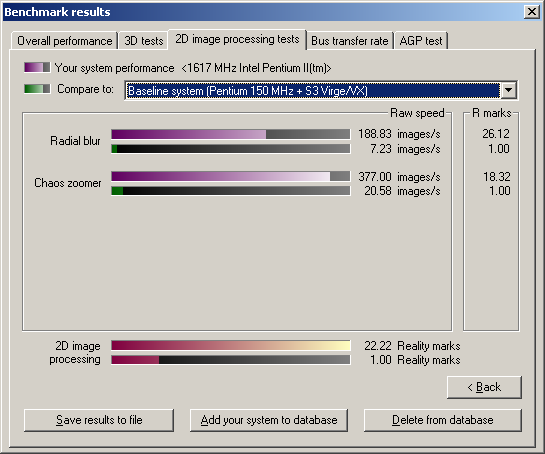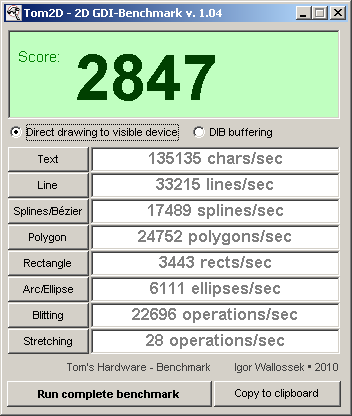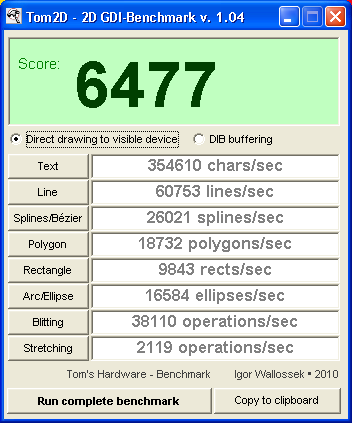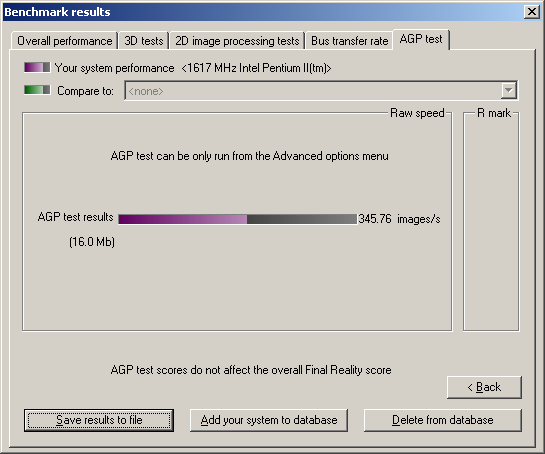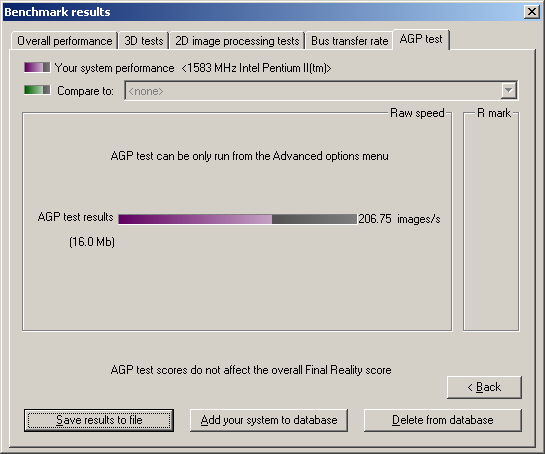First post, by Standard Def Steve
I scored a 6800GT-AGP for $10 last week. Despite the fact that every NVIDIA card newer than GF4 has given me problems of some kind in my VIA 694-based PIII-S, I threw it in and benchmarked anyway. I guess that officially makes me insane. 😀
Insanity sometimes pays off. Amazingly enough, this particular 6800GT--an EVGA--is actually stable in this board! My BFG 6800GT and EVGA 7800GS both had major problems with D3D. Almost every game would cause the screen to break out in artifacts and/or crash the system. So far, this card has had absolutely no problem with 3D, making it the first post-FX nvidia card I've tested that's actually useable in this machine.
Doom III, Thief 3, Splinter Cell, Painkiller, and the various 3DMarks all run flawlessly. Obviously, the PIII-S at 1585MHz is enough of a bottleneck that most of the games do not run noticeably faster on the 6800GT than they do on the 9800Pro. Doom 3, however, feels quite a bit smoother on the 6800GT @ 1280x1024/High. Unfortunately, the 2D performance is still not quite up to the 9800Pro. As with the other NV cards, 2D speed starts out normal, but decreases after a few minutes of use. Strangely--but fortunately--this card's 2D performance isn't as bad as the other NV cards I've tested with the VIA 694 chipset. I don't remember which driver I used in the past, so that may have something to do with it. Or different video BIOS versions may have something to do with it?
Anyway, here are some initial benchmarks. I tested the card in two machines:
Pentium III-S at 1586MHz/151FSB, VIA 694X, 1.5GB of SDRAM at 151MHz/2-2-2, Asus TUV4X, SB X-Fi, WinXP Pro SP3.
Athlon 64 3700+ (2.2GHz), nForce 3 250gb, 2GB of dual-channel DDR400/CL2.5, Gigabyte GA-K8NSC-939, WinXP Pro SP3.
For comparison, I'll also post 9800 Pro / Tualatin results. Most of the 9800 shots are a little older, but very little has changed with the Tualatin rig since taking them.
PENTIUM III - 1585MHz
Aquamark3 (6800GT/307.83)
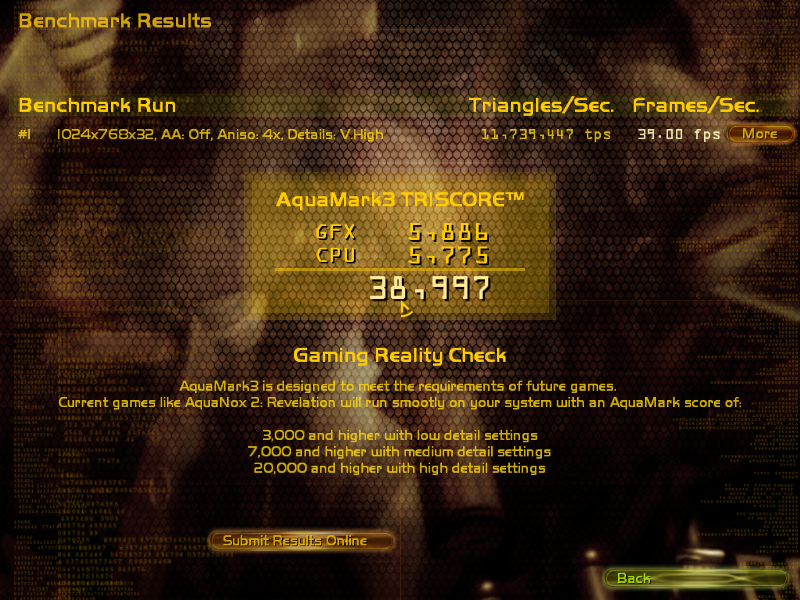
Aquamark3 (9800Pro/7.3)
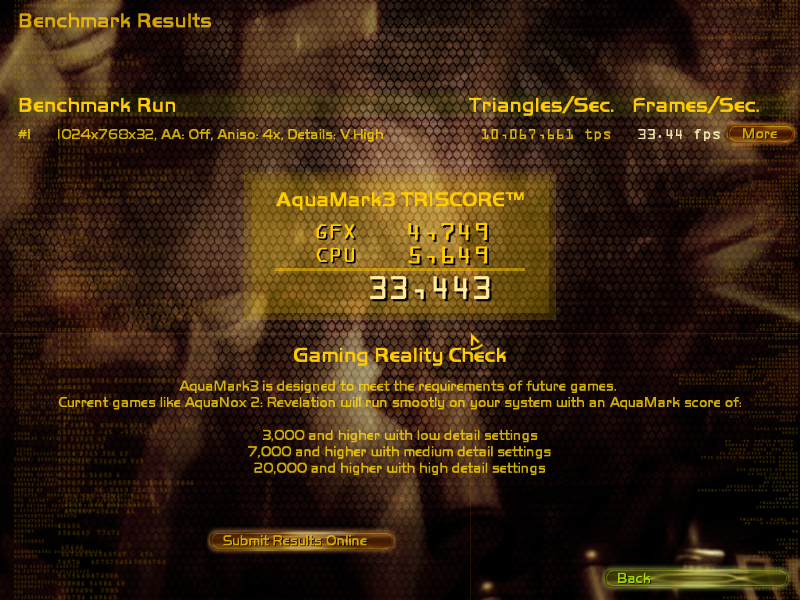
3DMark01 (6800GT/307.83):
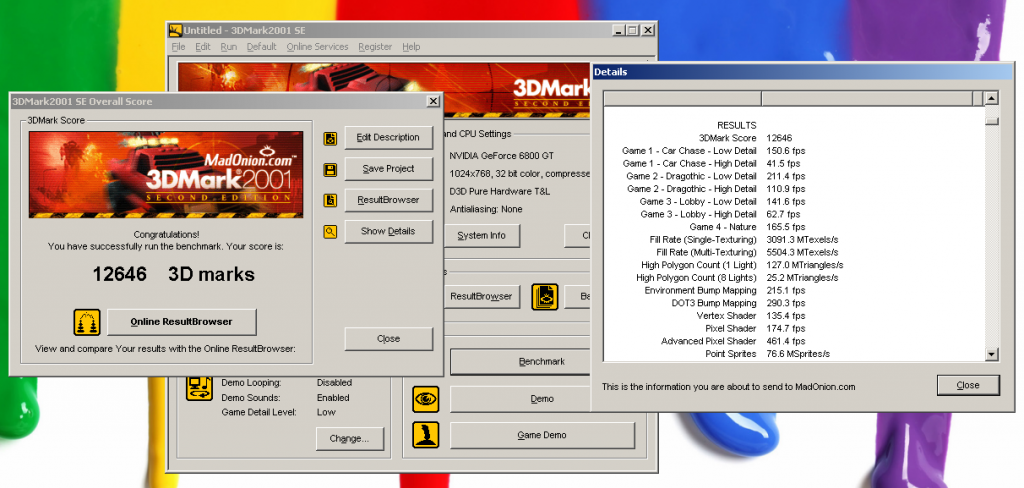
3DMark01 (9800 Pro/7.3):

3DMark03 (6800GT/307.83):
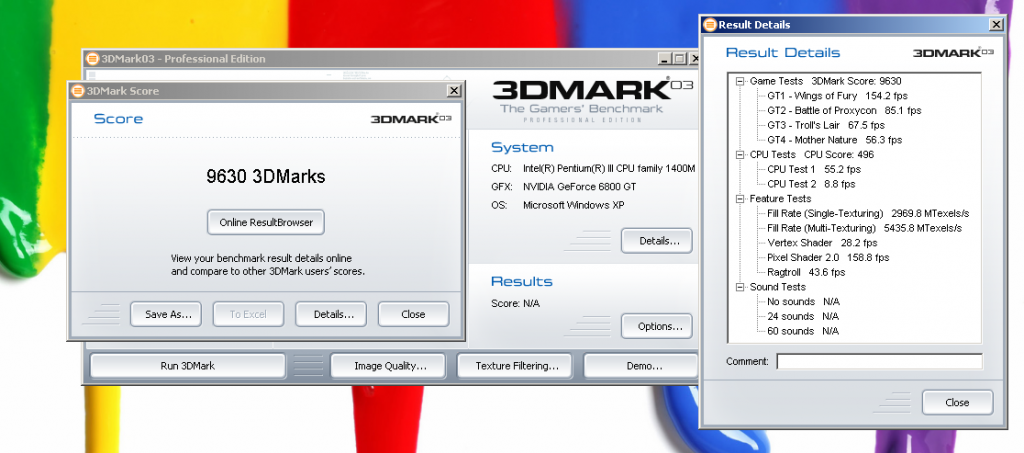
3DMark03 (9800 Pro/7.3 - notice how much lower the CPU score is with the ATI card. Strange stuff.)
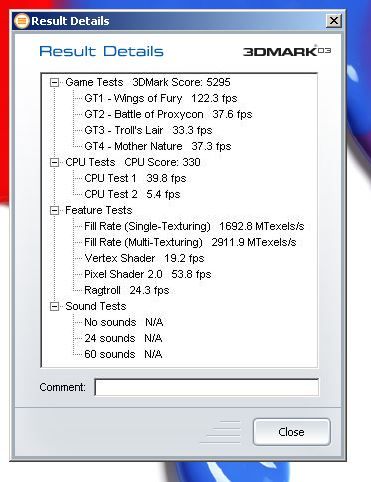
3DMark05 (6800GT/307.83):
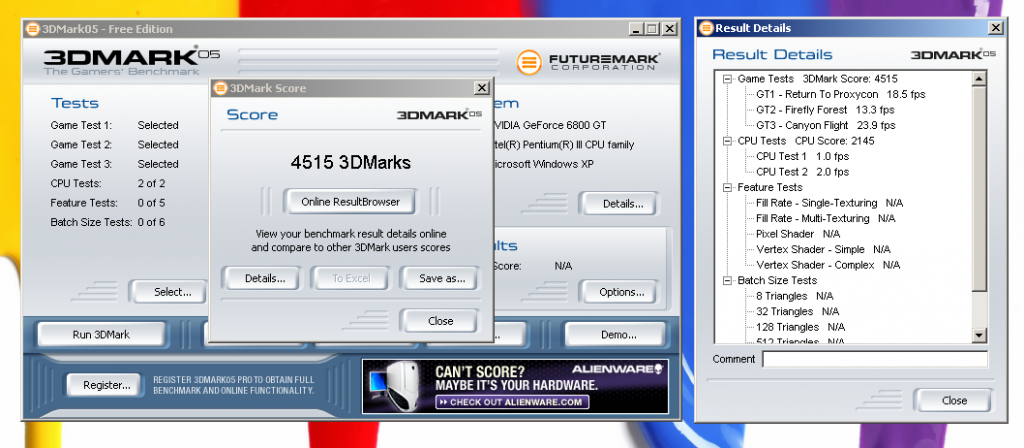
3DMark05 (9800 Pro/7.3 - again, the CPU result is lower with the ATI card)

Athlon 64 3700+ (2.2GHz)
All results are from the 6800GT. I didn't test the 9800 in this machine.
Aquamark3
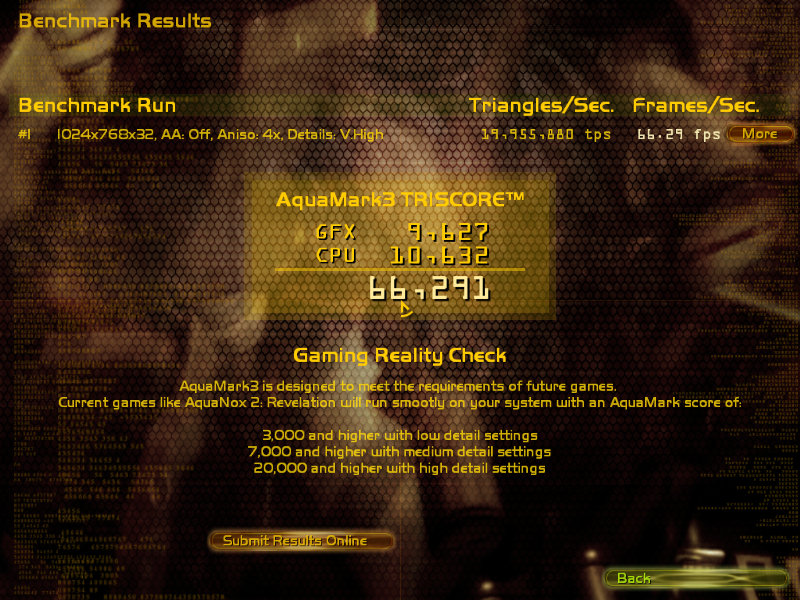
3DMark01
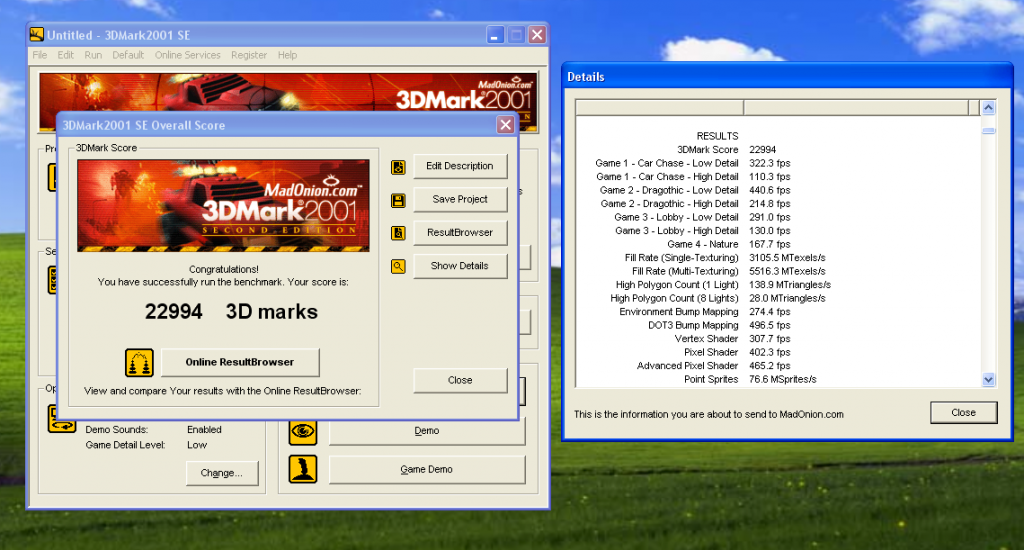
3DMark03
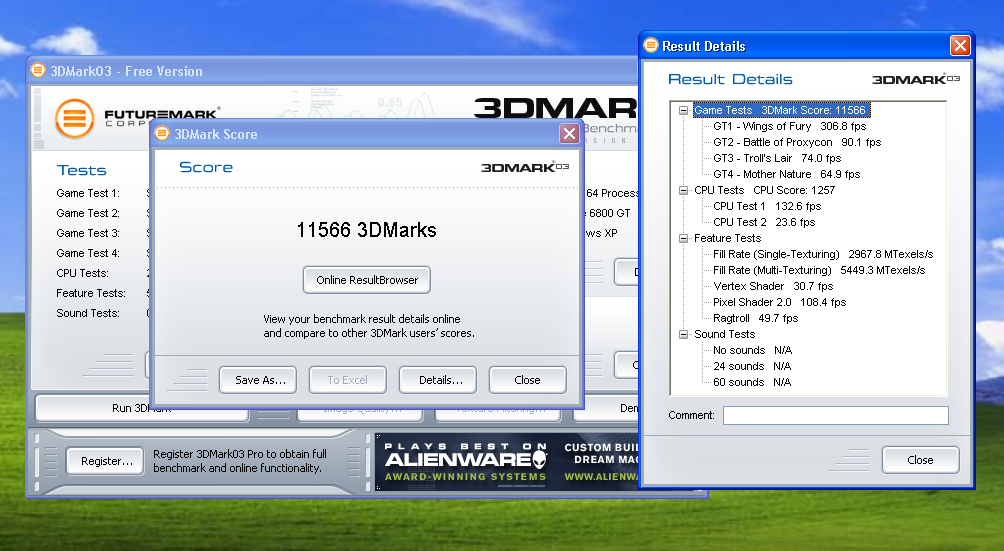
3DMark05
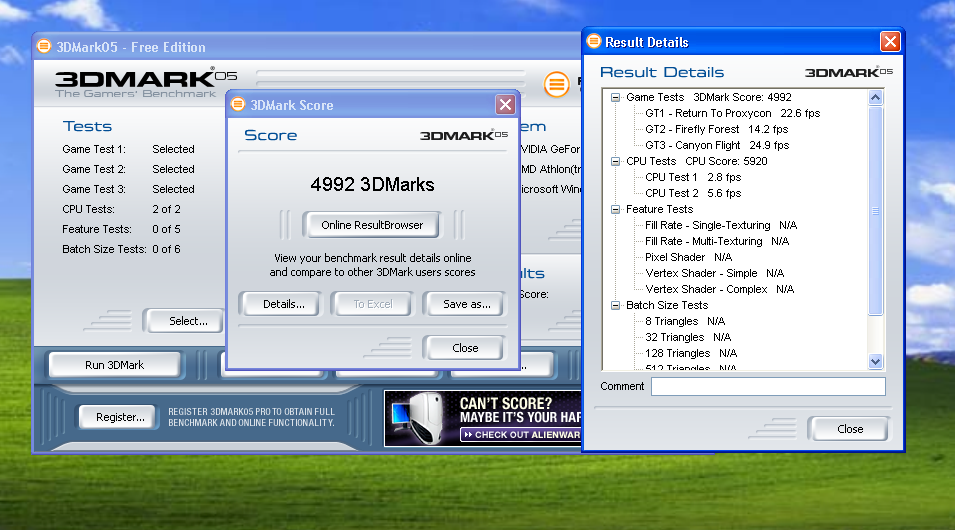
Dammit, I think I'm gonna keep this card! 😎
94 MHz NEC VR4300 | SGI Reality CoPro | 8MB RDRAM | Each game gets its own SSD - nooice!
